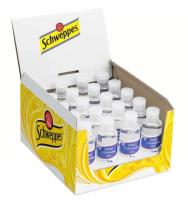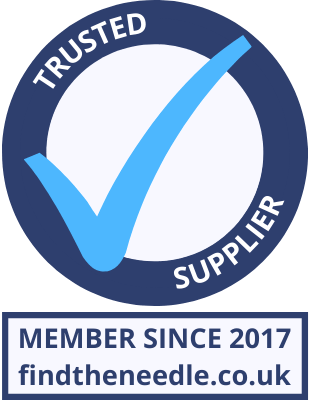 Add My Company
Add My Company
Sign In

Every now and then the shopping list develops a glitch and we run out of something basic. So last month I called into a pharmacy I don’t usually use (yes, it was me who messed up) and bought a couple of tubes of toothpaste, of a brand we’ve not used before. Interesting…first the flavour wasn’t great, but it’s toothpaste, right? No reason to throw it out.
But the real test came with what I can only describe as poor engineering. Someone had not done their maths. After a couple of gentle squeezes, the tube split and paste shot out the bottom and all over a clean pair of trousers. So far, just unlucky. But you can imagine the mood when the same thing happened with the second tube as well.
This was one of those small things that gets me thinking. Packaging is a key element of our business and my toothpaste mini drama reminded me of how important it is to get it right. Here’s a useful checklist to go through to help you hit the ‘packaging sweet spot’
1. What’s the packaging for?
This is such an obvious question that it’s often overlooked. It’s easy for everyone on the team to think someone else has decided this or is taking responsibility. However, it’s so important that every time new packing is required this should be the first thing specifically discussed. There’s nothing more frustrating than receiving goods that are damaged or ruined because the packaging is inadequate.
For example, if you’re selling paper, you need packaging that is reasonably strong (paper in bulk is heavy) and you need to make sure that it will protect the paper from getting damp. It’s no accident that copy paper is sold in boxes of five reams. It’s about as much as can be carried comfortably and safely, and each ream is usually packed in an outer layer that will keep the paper dry. The outer carton is generally strong enough to prevent damage to the paper in transit. Presumably it’s also cost effective. Ten out of ten for effective design.
Other goods, especially if irregularly shaped, present other problems. Here the question is likely to be fragility. A lot of clothing is shipped in plastic bags, because that’s cheap and the goods are unlikely to be damaged by being a bit squashed in the back of truck. It’s quite different, though, if you’re sending individual bottles, whether glass or plastic. Here, something much more robust is required and it will almost certainly include a strong outer container and lots of padding.
Some goods have a particular use which requires dedicated packaging. Personal Protective Equipment, for example, needs to leave the factory 100% free from contamination and arrive in the same state. Careful thought needs to go into how the packaging will be opened so as to maintain the highest levels of hygiene when it is put on – this may require a sequence of events and instructions which will be understood in only one way.
2. Liquid – how will you stop it running away?
For liquids, the immediate container is also critical. Whatever the liquid, it needs to be contained safely and securely so it won’t be damaged in transit and it needs to be robust enough to withstand normal use once it’s delivered. Very few liquids, even in bulk, are sold in square or rectangular containers, so real thought needs to go into designing bottles that are strong enough and practical to use. Many bottles today are plastic and this presents multiple challenges. If the plastic is too brittle it can crack; if it’s too thick it may cost too much and weigh too much for economic shipping. Does it need to flexible or is that incidental? And that’s not even thinking about the cap or lid. Will that be leakproof? Will it stand being opened and closed countless times?
3. Good design, bad design?
Clever, fashion-conscious ideas can backfire. Recently, a famous Dutch manufacturer of household chemicals, famous for their environmental ethos, redesigned the bottles for their laundry liquid. They look ultra-modern, but amongst other things, the new bottles have lost their handle. Perhaps this was in a bid to reduce the amount of plastic used. But no handle? No joke when manhandling 1.5 litres of expensive viscous liquid with only one hand. True, the sides of the bottles have indentations for a ‘thumb and fingers’ grip, but what about the older customer with arthritic hands or the parent in a hurry whose hands are not completely dry?
That purpose is a key part of design is clear, but so is the look. The trick comes in using the right materials that suit the purpose, while still allowing attractive labels to re-enforce the brand and provide instructions. And all of this needs to be done at a sustainable cost.
4. What’s the co$t?
Price can make or break a product. In today’s ultra-competitive markets a few cents on each item can make a difference. For high volume, low margin goods especially, the cost of packaging can be the difference between profit and loss. But the amount invested in a packaging can also do the same thing. Cheap packaging (like with the toothpaste I probably won’t buy again) will lead to low quality and a poor customer experience – which makes selling based on anything but price very difficult.
5. What’s the cost to the planet?
At some point every manufacturer needs to decide how to start using materials and processes that are environmentally friendly. If the coronavirus pandemic has taught us anything, it is that we live in an integrated world of fragile eco-systems. Using recyclable materials is going to become essential, as will reaching the point where the production of those materials is carbon neutral and non-polluting. It’s not easy, but it is essential.
What do we do at Kingly?
As the home of the original compact (compressed) T-shirts and towels, and with creative packaging as a key USP to complement our various products, we like to think we know a thing or two about packaging. Certainly, we have plenty of experience, and we are constantly juggling priorities: we’re sourcing materials and balance that with design criteria and the realities of fluctuating prices. In truth we are thinking about packaging the whole time. We’re always experimenting and we’re always learning; so, it was great to win the 2020 Promotional Gift Award for Upcycled Socks in Compostable Bags.
We’re working hard on how expand this approach. In all of our product ranges we strive always to use the packaging which most effectively balances visual appeal, practicality and sustainability. With our range of hygiene products, for example, we are really focused on making sure that the bottles we use for hand sanitizer are robust without being heavy. We have invested in bottle tops and pumps that work reliably, so our customers avoid the failures and spills associated with low quality brands from outside Europe.
When these are shipped it’s in strong boxes made from (recyclable) corrugated board which is then shrink-wrapped for cleanliness and protection. We’re in talks to provide refills for the 60 ml, 250 ml, 500 ml bottles; then the original bottles won’t need to be thrown away when empty. The bottles are already recyclable, but the next challenge is to source bottles which are themselves made of recycled plastic.
And we think big-picture too. To complement the bottles of sanitizer we also sell free-standing and table-top sanitizer stations – they help with managing refills and make visible the importance of keeping hands clean.
On a journey
And from this you can tell it’s a journey, often a complex one. We’re committed to environmentally responsible production and we are committed to sustainable, recyclable packaging. But like everyone else, we have to maintain what’s commercially viable at the same time. We’re constantly looking at innovative products that meet increasingly widespread environmental expectations.
Did I mention we like a challenge?
—
Get your promotional hygiene box packs with eco-friendly, compostable bags without paying more. Ask for out latest catalogue with ppe kits, sanitizers, freestanding and desktop sanitizer stations via service@wearekingly.com
For more information on Why is packaging as important as your product and how to improve it? talk to KINGLY LTD
Enquire Now
List your company on FindTheNeedle.

